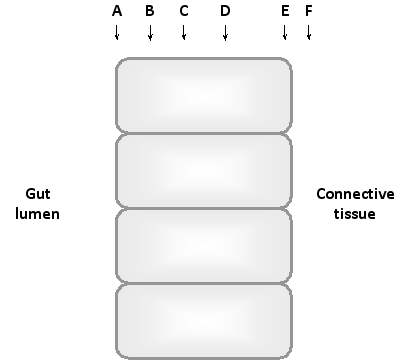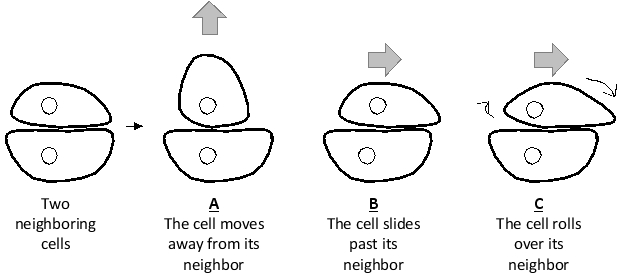Course
Cell Biology
Study Pack
Set 19 Cell Junctions And The Extracellular Matrix
Question 1
(Short Answer)
Free
In the following schematic diagram of a simple columnar epithelium lining the digestive tract, indicate which position (A to F) along the basal-apical axis better corresponds to each of the following features. Your answer would be a six-letter string composed of letters A to F only, e.g. FEDABC.

( ) Basal lamina
( ) Cell apex
( ) Adherens junctions
( ) Gap junctions
( ) Hemidesmosomes
( ) Tight junctions

( ) Basal lamina
( ) Cell apex
( ) Adherens junctions
( ) Gap junctions
( ) Hemidesmosomes
( ) Tight junctions
Answer
The adhesion belt (C) is usually forme...
View full Answer
Question 2
(Multiple Choice)
Free
Selectins …
A) mainly mediate cell-matrix attachments.
B) are members of the Ig superfamily of cell adhesion molecules.
C) do NOT require Ca²⁺ for their adhesive function, unlike integrins.
D) are carbohydrate-binding proteins.
E) All of the above.
Answer
Question 3
(Short Answer)
Free
Cadherin molecules at the cell surface are often clustered side-to-side to create a molecular Velcro that attaches the cell to another cell or to the extracellular matrix. In the following simplified drawings, two cells are initially attached via such a Velcro. When one of the cells moves in either of three different ways (A to C), it is faced with a mechanical resistance from the cadherin interactions. The resistance against which type of movement do you think is the weakest? Write down A, B, or C as your answer. 

Answer
According to the Velcro model, clustere...
View full Answer